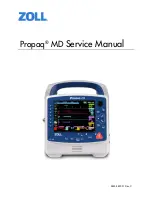
9
Switch the rocker switch (54) to coin operation or if the equipment is to be used
privately, to timer operation (see chapter 9, Privately Operated Unit)
Always read the total operating hours from the operating hours counter (34) Mount the cover plate (19) by
screwing in the screws (20). Then mount the side trim panels (31, 33). It should be noted that the supply
power cable must be fed through the circular opening in the right hand trim panel (31). Put the cover (32) on
by sliding it from the front under the head of the screwed in screw (88) and then tighten screws (88,89). The
front cover (18) abd the two rear trim panels (27 and 28) are each fitted with strips of Velcro. Press on
these to mount the side trim panels.
•
Assembly of the Superfan
Put the Superfan (7) approx. 2 inches from the front of the lounge on the foot side in the opening in the two
covers (32 and 33). Connect the Superfan cable (51) to the appropiate socket (52) on the pedestal.
Note:
If the construction of the room space is limited for side access, it is possible to mount the Superfan from the
front. To do this slightly loosen the two rear screws (88) on the side trim panel (32) and completely remove
the front screws (89). Pull the trim panel (32) out forwards. Then slide the Superfan (plug in the cable) and
then the trim panel into their positions from the front. Tighten all four screws on the cover.
3.3 Connection of the Unit’s Air Outlet (figure 1)
The unit are designed so that the heated cooling air is either blown into the room and is discharged from
there via the cubicle air extraction system, or is blown towards the rear or at the right hand side directly into
the outside area via the central air-discharge connection which is present on each unit. In its delivered
state, the unit is designed so that the heated air is blown into the room.
However, direct discharge of air (central air discharge) is the most effective manner and
is recommended.
Optional accesories: pipe connectors, hose clamps, air outlet hose.
Direct discharge of air with the air outlet at the rear (figure 1)
Replace the rear cover plate (55) the connecting plate (56), and replace the slotted air discharge cover (57)
at the side by the solid cover plate (55). If the hole in the wall cannot be made directly behind the connecting
plate (56), the distance can easily be bridged with an air hose. Fixing the hose to the connecting plate (56)
is done by a hose clamp. The hose adapters (connecting plate, hose clamps, etc) can be obtained from
your authorized dealer.
•
Direct discharge of air with the air outlet at the side (figure 1)
Remove the slotted air discharge cover (57) from the side air-outlet. There, attach a connecting plate, and
to that you must connect an air discharge hose by means of a hose clamp. The air discharge opening at
the rear remains closed. By means of duct connecting plates, a wall sleeve and automatic outlet flap, route
the air discharge hose into the outside atmosphere, or connect it to an air duct.
•
Air Discharge Collar Accessory
The direct discharge of outlet air can be performed by an air discharge collar (90) which replaces the
connecting plate (56). Using this air discharge collar port of the warmed cooling air can be fed into the
room and can pleasantly warm the during the cold periods of the year without additonal costs. The amount
of warm air fed into the room is controlled by opening the air slot on the air discharge collar with the round
knob. The air discharge collar can be obtained from your dealer or from PCM. Please call for details.
Attention, important information ! You must observe this; there is a danger of overheating!
To avoid excessive resistance to the air flow, the hose should not be longer than 6 feet
and should be laid so that any bends have as large a radius of curvature as possible,
and without kinks. If the air is discharged to the outside by a ventilation duct, it must be
ensured that the flow resistance in the interior of the duct is as low as possible; if
necessary, an additional fan might need to be installed there. In this case, please consult
a ventilation engineer. The rate of discharge is about 1500 m
3
/ hour; accordingly, fresh
air must be allowed to enter the room at the same rate. Therefore, you must provide
fresh air openings in the wall of the cubicle, having unobstructed cross section of at
least 700 cm
2
.
Содержание Tropical Series
Страница 19: ...19 ...
Страница 20: ...20 ID NR 237 883 08 02 PC MARKETING 1040 WILT AVENUE RIDGEFIELD NJ 07657 1 800 FAST TAN ...






































